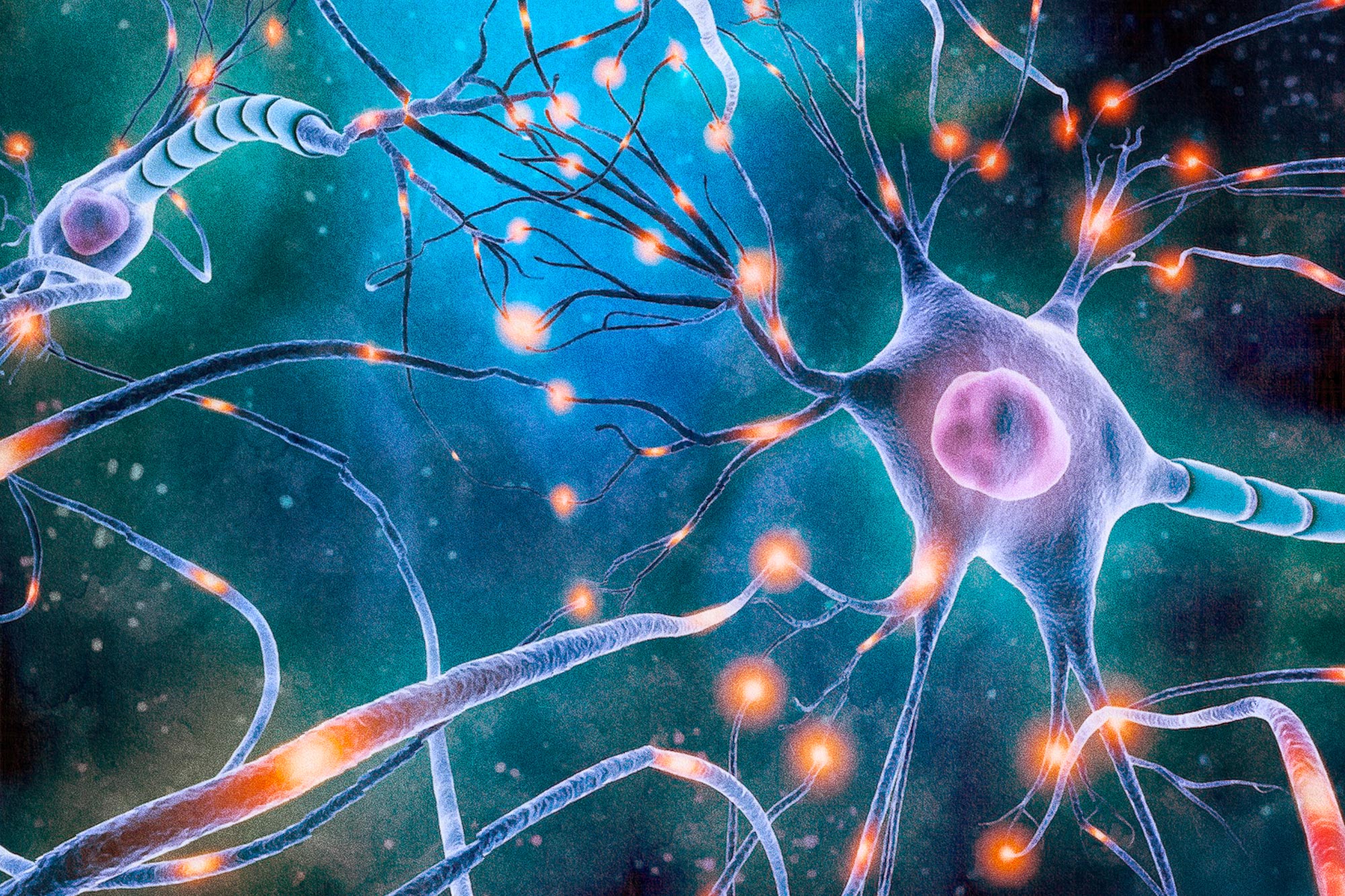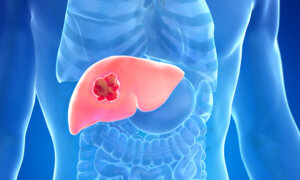“My active life is over. My risk of dying from COVID-19 is high. I’ll probably end up in a wheelchair or shuffling around like a zombie.”
These were the thoughts that raced through Keith Wilson’s mind when he was first diagnosed with Parkinson’s disease.
Wilson learned in an online seminar run by a Parkinson’s UK research group that a lack of dopamine had caused his condition. He soon discovered that an adrenaline rush made him feel better. Adrenaline and dopamine are chemically similar, his health consultant told him. Adrenaline can also temporarily boost dopamine levels.
At the end of the COVID-19 pandemic lockdown, Wilson planned a trip with his wife and two 14-year-old godsons. During one week alone, he rode roller coasters 37 times with the boys. Afterward, he felt that his condition had been momentarily reversed.
“I was more chatty, energized, and sociable,” he told The Epoch Times.
Wilson’s wife pointed out that some of his rides had been virtual, and suggested that they find a way to recreate the experiences at home. After learning that virtual roller coasters were available through virtual reality (VR) headsets, they purchased two—and the results were striking.
“The use of VR has restored my sense of balance and given me so much more energy,“ Wilson said. ”It stimulates underused parts of the brain, which helps compensate for the loss of dopamine.”
His experience aligns with research on how dopamine-driven activities can help manage Parkinson’s symptoms, a concept that has caught the attention of experts.
Parkinson’s is often seen as a condition beyond personal control, but Wilson’s journey challenges that notion.
“I think his approach is excellent,” Dr. Sulagna Misra, an integrative medicine practitioner, told The Epoch Times. She said that integrating nontraditional methods, such as VR, with standard treatments can lead to better outcomes than medication alone.
The Dopamine Connection
Wilson’s experience supports research suggesting that a lack of dopamine is a key part of Parkinson’s disease and that engaging in dopamine-stimulating activities may help relieve some symptoms.
“Parkinson’s leads to the death of neurons—specifically those that produce dopamine,“ Kate Chaytor-Norris, a registered nutritional therapist, told The Epoch Times. ”One of the key drivers of its symptoms is a lack of dopamine.”
Dopamine has many roles, but in Parkinson’s, its most recognized impact is on motor function. Nerve signal transmission is how the brain sends messages to the body to control movement and other functions. In Parkinson’s disease, low dopamine levels disrupt these messages, making it harder for the body to move properly.
Movement slows, gait and balance become difficult, and tremors often develop. However, dopamine also influences motivation, pleasure, and attention. This means that alongside motor challenges, Parkinson’s can have significant but less widely recognized effects on mental health, Chaytor-Norris said.
However, dopamine dysfunction doesn’t just cause the disease, it also makes it worse over time. Improving dopamine levels and protecting the cells that produce dopamine may be crucial for slowing its progression, which can be effective in managing Parkinson’s symptoms.
A Multipronged Approach
Wilson’s success in managing Parkinson’s disease didn’t come from any single approach, but rather from a combination of exercise and innovative tools such as VR.
Exercise–the Dopamine-Driven Activity
Exercise is widely recognized as a
nonpharmacological approach to managing Parkinson’s disease.
A 2024 study published in npj Parkinson’s Disease found that six months of intense exercise helped improve dopamine levels in the brains of people with early Parkinson’s disease, showing that exercise can positively affect the brain’s dopamine system.
Intense exercise, such as the roller coaster that alleviated Wilson’s symptoms, can boost adrenaline. Adrenaline is a hormone that is chemically similar to dopamine. It can temporarily boost dopamine levels, which could be why an adrenaline rush can help restore a sense of alertness or normality.
Wilson made exercise a cornerstone of his Parkinson’s management plan. In 2024, his real-world adventures included cycling around the Zuiderzee in the Netherlands, tackling the Haute Route in the Alps, and hiking the West Highland Way in Scotland.
Both cardiovascular exercise and strength training are important, Chaytor-Norris said. Cardiovascular training has been shown to improve brain-derived neurotrophic factor—described as “miracle grow” for the brain—and to help heal neurons, she said.
Strength training can offer other important benefits, such as preserving muscle. This is crucial, as muscle loss is common in those with Parkinson’s. It can also counteract the muscle stiffness and weakness that often accompany the condition, improving overall mobility and flexibility, Chaytor-Norris noted.
Exercise reduces the risk of developing Parkinson’s and improves both motor and non-motor symptoms. It works in several ways, including helping the brain repair itself and promoting the growth of new brain cells and blood vessels.
VR
VR makes exercise more engaging by transforming routine activities, such as walking on a treadmill, into immersive experiences, such as strolling along a beach. Beyond simply enhancing enjoyment, VR can simulate real-world obstacles, such as stepping over driftwood or seaweed. This helps users practice balance and coordination in a controlled setting. Such movement can lead to real-life benefits, such as reducing the risk of falls, Misra said.
These innovations should complement, not replace, conventional medical care, she noted.
The Role of Diet
In addition to the strategies that worked for Wilson, a few other lifestyle factors might be useful, including
diet.
If blood sugar levels fluctuate and excess sugar circulates in the bloodstream, it can bind to substances in the body, forming advanced glycation end products. These harmful compounds contribute to damage in the body and play a role in the progression of neurodegenerative diseases.
To help stabilize blood sugar, reducing the intake of sugars and refined carbohydrates and ensuring that meals contain sufficient protein and healthy fats can be beneficial, Chaytor-Norris said.
Another way to support dopamine is through tyrosine. Tyrosine is an amino acid (a building block of protein) that is turned into L-dopa in the body, which is metabolized into dopamine. Foods rich in tyrosine include beef, pork, lamb, poultry, salmon, trout, eggs, almonds, pumpkins, and sesame seeds, Chaytor-Norris said.
Sleep
Along with dopamine-boosting activities, exercise, and diet, quality and
duration of sleep should also be considered.
“It would be remiss of me not to mention the importance of sleep in relation to Parkinson’s, as toxicity is a key underlying factor,” Chaytor-Norris said.
Sleep is the body’s only opportunity to detoxify and cleanse the brain. Maintaining a regular sleep routine, such as going to bed at the same time each night, is crucial. Ideally, waking up naturally, without the jarring sound of an alarm clock, is also highly beneficial, she said.
On a related note, investigating potential sources of excess toxicity in the body, such as heavy metals, mold, or glyphosate, and supporting the body in clearing these toxins can have profoundly positive effects, Chaytor-Norris noted.
It Starts With Willingness
“Sometimes it feels like you need to throw ‘everything and the kitchen sink’ at Parkinson’s disease to optimize outcomes,” Misra said.
Engaging patients with a Parkinson’s diagnosis can be challenging, but with such a debilitating condition, a comprehensive approach is often necessary.
“Whether or not there’s a genetic link, life with Parkinson’s can still be lived well,” Wilson said. “But it all starts with a willingness to help yourself.”









